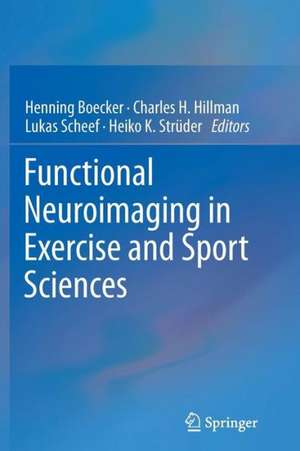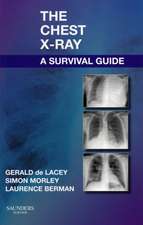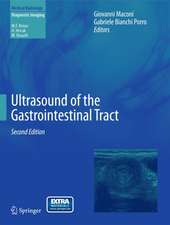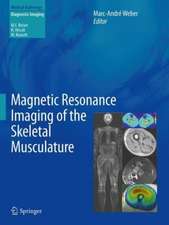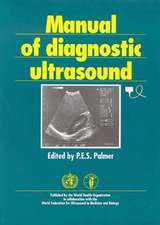Functional Neuroimaging in Exercise and Sport Sciences
Editat de Henning Boecker, Charles H. Hillman, Lukas Scheef, Heiko K. Strüderen Limba Engleză Paperback – 17 iul 2014
| Toate formatele și edițiile | Preț | Express |
|---|---|---|
| Paperback (1) | 1663.95 lei 6-8 săpt. | |
| Springer – 17 iul 2014 | 1663.95 lei 6-8 săpt. | |
| Hardback (1) | 1668.70 lei 6-8 săpt. | |
| Springer – 19 iun 2012 | 1668.70 lei 6-8 săpt. |
Preț: 1663.95 lei
Preț vechi: 2029.20 lei
-18% Nou
Puncte Express: 2496
Preț estimativ în valută:
318.41€ • 340.48$ • 265.47£
318.41€ • 340.48$ • 265.47£
Carte tipărită la comandă
Livrare economică 17 aprilie-01 mai
Preluare comenzi: 021 569.72.76
Specificații
ISBN-13: 9781493901784
ISBN-10: 1493901788
Pagini: 540
Ilustrații: XX, 520 p.
Dimensiuni: 155 x 235 x 28 mm
Greutate: 0.75 kg
Ediția:2012
Editura: Springer
Colecția Springer
Locul publicării:New York, NY, United States
ISBN-10: 1493901788
Pagini: 540
Ilustrații: XX, 520 p.
Dimensiuni: 155 x 235 x 28 mm
Greutate: 0.75 kg
Ediția:2012
Editura: Springer
Colecția Springer
Locul publicării:New York, NY, United States
Public țintă
ResearchCuprins
Preface: Scope of the book.- Exercise and the Brain: Neurogenesis, Synaptic Plasticity, Spine Density and Angiogenesis.- Molecular Mechanisms for the Ability of Exercise Supporting Cognitive Abilities and Counteracting Neurological Disorders.- Opioids and Exercise: Animal Models.- The Monoaminergic System in Animal Models of Exercise.- Methods for measurement of physical fitness and training recommendations in studies on humans.- Psychological Assessments in Physical Exercise.- Assessing Somato-Sensory Profiles and Autonomic Nervous System Responses in Physical Exercise Studies.- Humoral factors in humans participating in different types of exercise and training.- EEG: Theoretical Background and Practical Aspects.- EEG: Theoretical Background and Practical Aspects.- The theoretical background of MR-Imaging.- Functional and Structural MRI: Theoretical Background and Practical Aspects.- PET: Theoretical Background and Practical Aspects.- NIRS for measuring cerebral hemodynamic responses during exercise.- PET Studies of Brain Metabolism in Exercise Research.- Physical exercise and the resting brain.- Structural Plasticity Induced by Physical Exercise.- The Relation of ERP Indices of Exercise to Brain Health and Cognition.- Relationship Between Exercise and Cognitive Processing Studied by MRI in Elderly People.- Cross-sectional Studies on the Influence of Exercise on Brain Structure, Functional Activation, and Cognition in Health and Disease.- The effects of exercise on brain cortical function and its implication on
mental health and mood.- Effects of Aerobic Exercise on Mood and Human Opioidergic Activation Measured by Positron Emission Tomography.
mental health and mood.- Effects of Aerobic Exercise on Mood and Human Opioidergic Activation Measured by Positron Emission Tomography.
Recenzii
From the reviews:
“This book a significant contribution to the literature. … It is appropriate for scientists who have more than a rudimentary understanding of both the exercise and neurobiological sciences. … A PhD or MD who specializes in either exercise science or the neurosciences may find this book useful for research designs. … This is a unique book in the fields of exercise science and neuroscience, providing a means to delve into the neurobiology of human exercise.” (Erik H. VanIterson, Doody’s Review Service, September, 2012)
“This book a significant contribution to the literature. … It is appropriate for scientists who have more than a rudimentary understanding of both the exercise and neurobiological sciences. … A PhD or MD who specializes in either exercise science or the neurosciences may find this book useful for research designs. … This is a unique book in the fields of exercise science and neuroscience, providing a means to delve into the neurobiology of human exercise.” (Erik H. VanIterson, Doody’s Review Service, September, 2012)
Textul de pe ultima copertă
Regular physical exercise is associated with substantial health benefits. Recent evidence not only holds for cardiovascular effects promoting "physical health", but also for the central nervous system believed to promote "brain health”. Moderate physical exercise has been found to improve learning, memory, and attentional processing, with recent research indicating that neuroprotective mechanisms and associated plasticity in brain structure and function also benefit. Physical exercise is also known to induce a range of acute or sustained psychophysiological effects, among these mood elevation, stress reduction, anxiolysis, and hypoalgesia. Today, modern functional neuroimaging techniques afford direct measurement of the acute and chronic relation of physical exercise on the human brain, as well as the correlation of the derived physiological in vivo signals with behavioral outcomes recorded during and after exercise. A wide range of imaging techniques have been applied to human exercise research, ranging from electroencephalography (EEG), magnetoencephalography (MEG), near infrared spectroscopy (NIRS), magnetic resonance imaging (MRI) to positron emission tomography (PET). All of these imaging methods provide distinct information, and they differ considerably in terms of spatial and temporal resolution, availability, cost, and associated risks. However, from a “multimodal imaging” perspective, neuroimaging provides an unprecedented potential to unravel the neurobiology of human exercise, covering a wide spectrum ranging from structural plasticity in gray and white matter, network dynamics, global and regional perfusion, evoked neuronal responses to the quantification of neurotransmitter release. The aim of this book is to provide the current state of the human neuroimaging literature in the emerging field of the neurobiological exercise sciences and to outline future applications and directions of research.
Caracteristici
The book discusses the current state of the human neuroimaging literature in the emerging fields of the neurobiological sports sciences While there are numerous neuroimaging books on the market, there are none devoted exclusively to exercise/sport sciences A much needed and timely reference work
